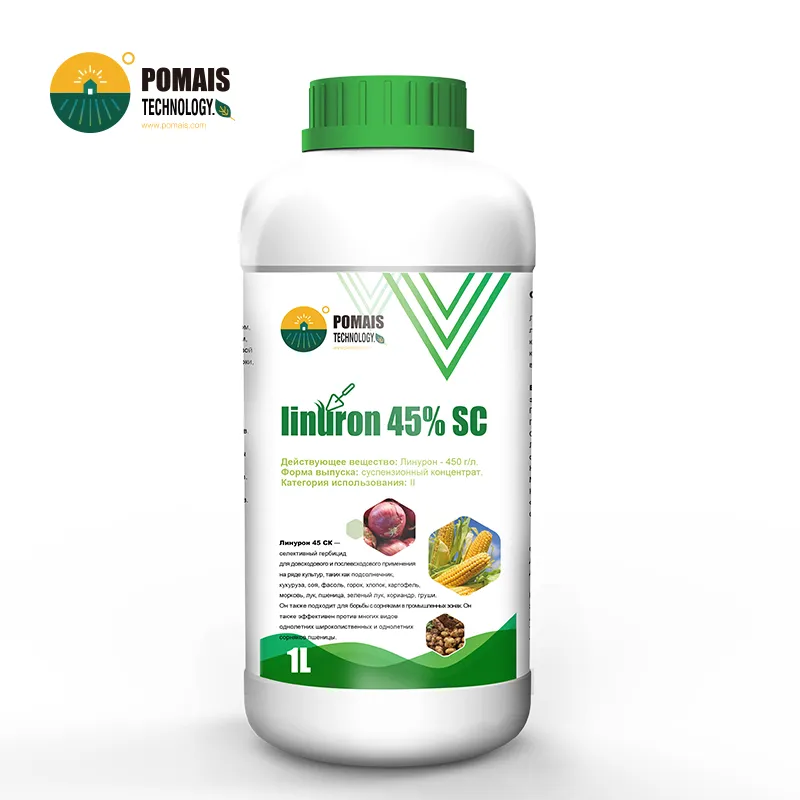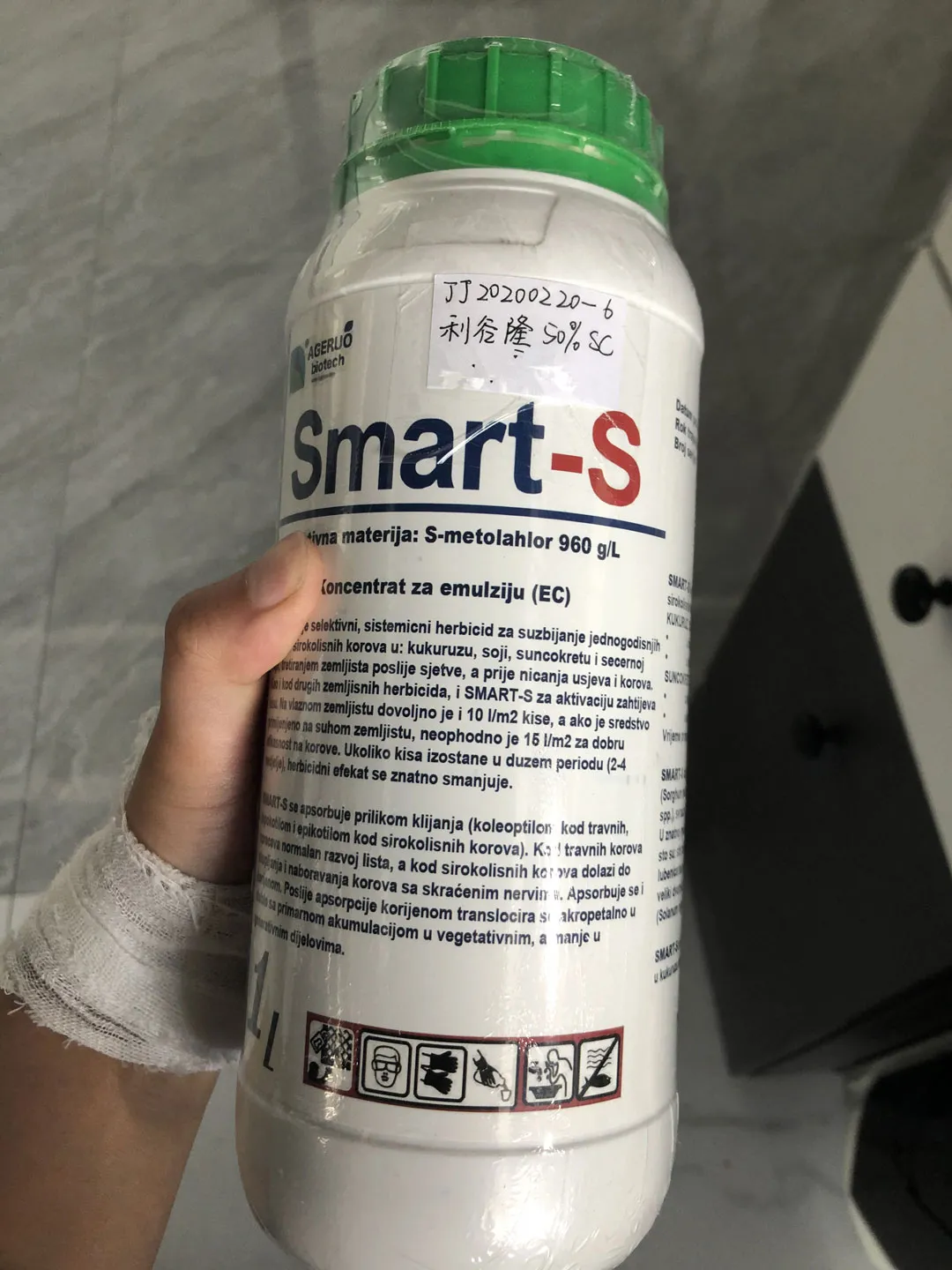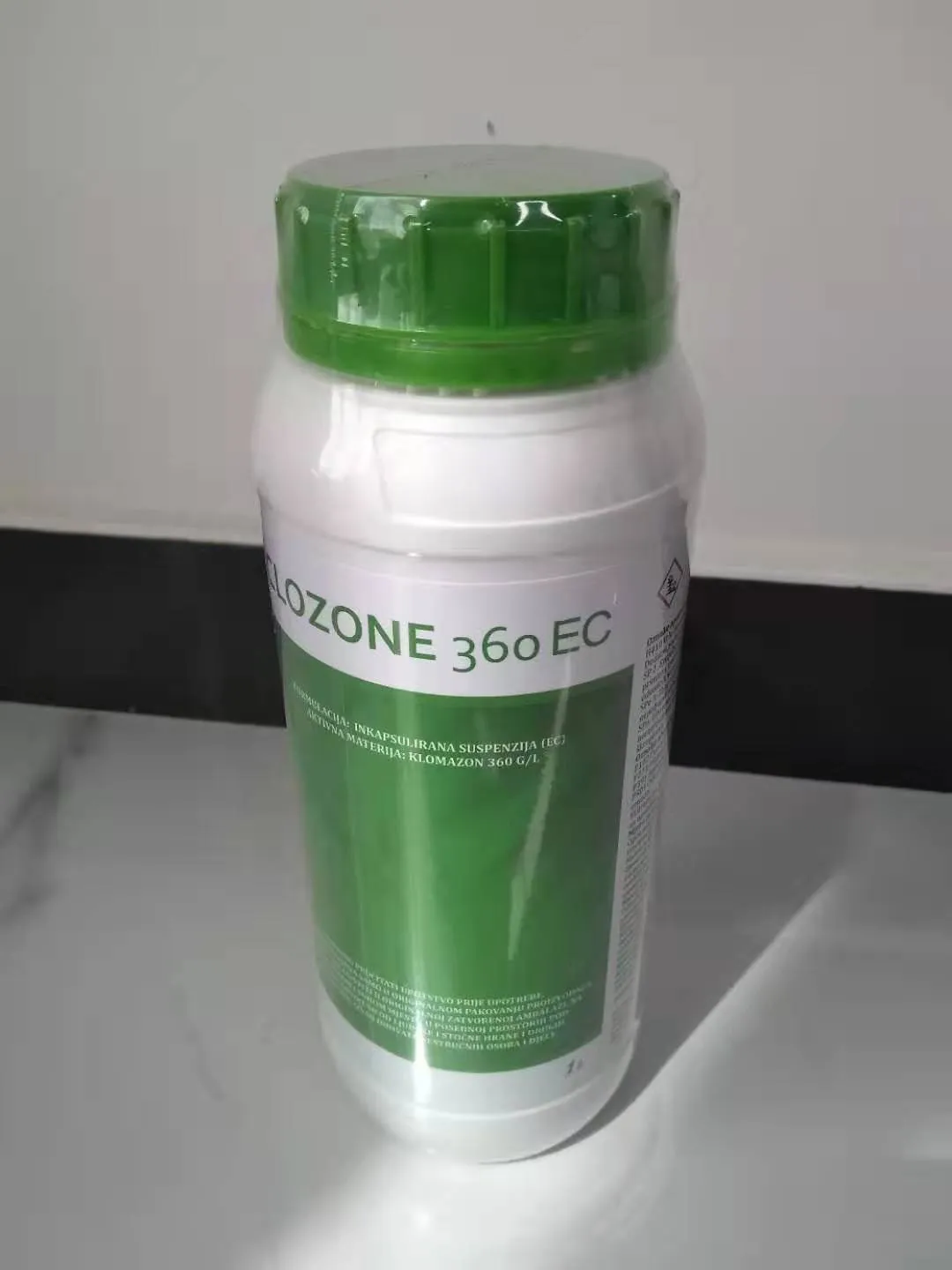Linuron Mode of Action & Active Ingredient: How This Selective Herbicide Works
Linuron’s proven mode of action as a PS II inhibitor herbicide helps growers achieve selective, reliable weed control — but using it correctly is the key to protecting crops, yields, and soil health for seasons to come.
What is Linuron?
Linuron is a selective urea-based herbicide trusted by growers to control a broad spectrum of annual broadleaf and grassy weeds, especially in high-value crops like carrots, celery, potatoes, soybeans, and cotton.
As a pre-emergent and early post-emergent option, Linuron works best when applied before weeds establish strong roots, giving crops a clean start and minimizing costly competition for nutrients, sunlight, and water.
Farmers value Linuron for its proven fit in row crops and vegetable production, where precise weed control is critical for maintaining quality and yields. Its selective nature means that, when used according to label directions, it targets troublesome weeds while staying gentle on the crop itself.
Mode of Action: How Linuron Works
Linuron works by blocking the photosynthesis process in weeds, making it part of the well-known PS II (Photosystem II) inhibitor family.
More specifically, it binds to the D1 protein in the chloroplast’s thylakoid membrane, stopping the flow of electrons needed for the plant to convert sunlight into energy. When a weed can’t complete photosynthesis, it loses the ability to grow, dries up, and eventually dies off before it competes with your crops.
Because Linuron mainly targets small-seeded annual broadleaf weeds and some grassy weeds at their most vulnerable stage, timing is everything.
Its selectivity comes from the fact that your crops can tolerate the active ingredient’s mode of action when used within the recommended dose range — while the weeds, with their less developed defense systems, can’t.
Compared to other PS II herbicides like diuron or atrazine, Linuron’s flexibility across vegetable and row crops has made it a trusted option for decades. But like all PS II inhibitors, resistance management is critical to keep this mode of action effective season after season.
Typical Application Uses & Best Practices
Linuron delivers the best weed control when it’s used at the right stage, under the right field conditions.
Most growers rely on Linuron as a pre-emergent herbicide, applying it after planting but before weed seeds have germinated — this ensures a clean seedbed and reduces the need for early hand weeding or multiple follow-up sprays. In some crops like carrots or potatoes, it can also be used as an early post-emergent spray, targeting weeds while they’re still at the seedling stage.
Soil conditions matter.
For Linuron to work properly, the soil should have enough moisture to activate the herbicide and allow it to be absorbed by emerging weed seedlings. Dry, compacted soils can reduce performance, so a light rain or gentle irrigation within a few days of application helps secure even coverage.
Best practice tips include:
- Always apply at the label-recommended rates for your crop — underdosing can lead to weed escapes, overdosing can risk crop injury.
- Avoid applying on extremely sandy soils without enough organic matter, as this can increase leaching and reduce selectivity.
- Use well-calibrated sprayers to achieve uniform coverage and minimize drift onto non-target areas.
When timed and handled correctly, Linuron saves growers hours of manual weeding and helps maintain clean rows, healthy stands, and more consistent yields.
Tank Mixing & Resistance Management
Like other PS II inhibitor herbicides, Linuron performs even better when used as part of a smart weed control program — and that often means tank mixing.
Growers frequently mix Linuron with herbicides from different mode-of-action groups to broaden the spectrum of weeds controlled and reduce the risk of resistance. For example, in soybeans or carrots, Linuron can be tank mixed with glyphosate, metribuzin, or other compatible pre-emergent partners to knock down weeds that may otherwise slip through.
Combining multiple active ingredients with different targets helps keep tough broadleaf weeds and grasses in check — especially in fields with known herbicide-resistant biotypes. Always check product labels for compatibility, recommended rates, and crop safety to avoid any unintended crop injury or sprayer issues.
For sustainable weed control, good resistance management practices are essential:
- Rotate Linuron with other herbicides that use different modes of action, rather than relying on PS II inhibitors alone year after year.
- Use full label rates and treat the entire field area uniformly to prevent weed escapes.
- Integrate cultural practices like cover cropping, proper tillage, and competitive planting densities to help crops outcompete weeds naturally.
Staying proactive helps extend the life of Linuron’s effectiveness — protecting your crop yields and your farm’s long-term weed management success.
Regulatory & Safety Considerations
Linuron has a long track record of use in many countries, but like all herbicides, its status can vary depending on local regulations and environmental guidelines.
In the European Union, for example, Linuron’s approvals were withdrawn due to evolving residue and groundwater standards, so growers must now rely on alternative herbicides for the same weed spectrum. However, in regions like North America, parts of South America, and some Asian countries, Linuron remains registered for specific crops such as carrots, celery, potatoes, and soybeans — always check local labels and maximum residue limits (MRLs) to ensure compliance.
When handling Linuron, good stewardship means wearing proper protective equipment (PPE), using well-calibrated sprayers to prevent off-target drift, and respecting buffer zones around sensitive areas like waterways.
Proper storage and disposal also matter: keep the product in a secure place away from children and animals, and follow label instructions for rinsing and discarding empty containers.
Following these safety steps helps growers protect not only their crops, but also surrounding ecosystems and their farm’s reputation for sustainable practices.
Conclusion: Why Understanding Linuron’s Mode of Action Matters
Linuron has earned its place as a go-to selective herbicide for growers who need reliable control of annual broadleaf and grassy weeds in specialty and row crops.
Its clear mode of action — blocking photosynthesis by inhibiting the Photosystem II pathway — makes it effective yet selective, giving your crops a head start while holding weeds back before they steal light, water, and nutrients.
But success with Linuron doesn’t stop at knowing what it does — it depends on using it responsibly.
That means applying at the right timing and rate, watching soil conditions, tank mixing wisely to manage resistance, and staying up to date with local regulatory guidelines.
By understanding how Linuron works and how best to apply it, you’re not just fighting weeds this season — you’re investing in your soil’s health, your crop’s yield potential, and your farm’s long-term sustainability.
Linuron’s proven mode of action as a PS II inhibitor herbicide helps growers achieve selective, reliable weed control — but using it correctly is the key to protecting crops, yields, and soil health for seasons to come.
What is Linuron?
Linuron is a selective urea-based herbicide trusted by growers to control a broad spectrum of annual broadleaf and grassy weeds, especially in high-value crops like carrots, celery, potatoes, soybeans, and cotton.
As a pre-emergent and early post-emergent option, Linuron works best when applied before weeds establish strong roots, giving crops a clean start and minimizing costly competition for nutrients, sunlight, and water.
Farmers value Linuron for its proven fit in row crops and vegetable production, where precise weed control is critical for maintaining quality and yields. Its selective nature means that, when used according to label directions, it targets troublesome weeds while staying gentle on the crop itself.
Mode of Action: How Linuron Works
Linuron works by blocking the photosynthesis process in weeds, making it part of the well-known PS II (Photosystem II) inhibitor family.
More specifically, it binds to the D1 protein in the chloroplast’s thylakoid membrane, stopping the flow of electrons needed for the plant to convert sunlight into energy. When a weed can’t complete photosynthesis, it loses the ability to grow, dries up, and eventually dies off before it competes with your crops.
Because Linuron mainly targets small-seeded annual broadleaf weeds and some grassy weeds at their most vulnerable stage, timing is everything.
Its selectivity comes from the fact that your crops can tolerate the active ingredient’s mode of action when used within the recommended dose range — while the weeds, with their less developed defense systems, can’t.
Compared to other PS II herbicides like diuron or atrazine, Linuron’s flexibility across vegetable and row crops has made it a trusted option for decades. But like all PS II inhibitors, resistance management is critical to keep this mode of action effective season after season.
Typical Application Uses & Best Practices
Linuron delivers the best weed control when it’s used at the right stage, under the right field conditions.
Most growers rely on Linuron as a pre-emergent herbicide, applying it after planting but before weed seeds have germinated — this ensures a clean seedbed and reduces the need for early hand weeding or multiple follow-up sprays. In some crops like carrots or potatoes, it can also be used as an early post-emergent spray, targeting weeds while they’re still at the seedling stage.
Soil conditions matter.
For Linuron to work properly, the soil should have enough moisture to activate the herbicide and allow it to be absorbed by emerging weed seedlings. Dry, compacted soils can reduce performance, so a light rain or gentle irrigation within a few days of application helps secure even coverage.
Best practice tips include:
- Always apply at the label-recommended rates for your crop — underdosing can lead to weed escapes, overdosing can risk crop injury.
- Avoid applying on extremely sandy soils without enough organic matter, as this can increase leaching and reduce selectivity.
- Use well-calibrated sprayers to achieve uniform coverage and minimize drift onto non-target areas.
When timed and handled correctly, Linuron saves growers hours of manual weeding and helps maintain clean rows, healthy stands, and more consistent yields.
Tank Mixing & Resistance Management
Like other PS II inhibitor herbicides, Linuron performs even better when used as part of a smart weed control program — and that often means tank mixing.
Growers frequently mix Linuron with herbicides from different mode-of-action groups to broaden the spectrum of weeds controlled and reduce the risk of resistance. For example, in soybeans or carrots, Linuron can be tank mixed with glyphosate, metribuzin, or other compatible pre-emergent partners to knock down weeds that may otherwise slip through.
Combining multiple active ingredients with different targets helps keep tough broadleaf weeds and grasses in check — especially in fields with known herbicide-resistant biotypes. Always check product labels for compatibility, recommended rates, and crop safety to avoid any unintended crop injury or sprayer issues.
For sustainable weed control, good resistance management practices are essential:
- Rotate Linuron with other herbicides that use different modes of action, rather than relying on PS II inhibitors alone year after year.
- Use full label rates and treat the entire field area uniformly to prevent weed escapes.
- Integrate cultural practices like cover cropping, proper tillage, and competitive planting densities to help crops outcompete weeds naturally.
Staying proactive helps extend the life of Linuron’s effectiveness — protecting your crop yields and your farm’s long-term weed management success.
Regulatory & Safety Considerations
Linuron has a long track record of use in many countries, but like all herbicides, its status can vary depending on local regulations and environmental guidelines.
In the European Union, for example, Linuron’s approvals were withdrawn due to evolving residue and groundwater standards, so growers must now rely on alternative herbicides for the same weed spectrum. However, in regions like North America, parts of South America, and some Asian countries, Linuron remains registered for specific crops such as carrots, celery, potatoes, and soybeans — always check local labels and maximum residue limits (MRLs) to ensure compliance.
When handling Linuron, good stewardship means wearing proper protective equipment (PPE), using well-calibrated sprayers to prevent off-target drift, and respecting buffer zones around sensitive areas like waterways.
Proper storage and disposal also matter: keep the product in a secure place away from children and animals, and follow label instructions for rinsing and discarding empty containers.
Following these safety steps helps growers protect not only their crops, but also surrounding ecosystems and their farm’s reputation for sustainable practices.
Conclusion: Why Understanding Linuron’s Mode of Action Matters
Linuron has earned its place as a go-to selective herbicide for growers who need reliable control of annual broadleaf and grassy weeds in specialty and row crops.
Its clear mode of action — blocking photosynthesis by inhibiting the Photosystem II pathway — makes it effective yet selective, giving your crops a head start while holding weeds back before they steal light, water, and nutrients.
But success with Linuron doesn’t stop at knowing what it does — it depends on using it responsibly.
That means applying at the right timing and rate, watching soil conditions, tank mixing wisely to manage resistance, and staying up to date with local regulatory guidelines.
By understanding how Linuron works and how best to apply it, you’re not just fighting weeds this season — you’re investing in your soil’s health, your crop’s yield potential, and your farm’s long-term sustainability.







